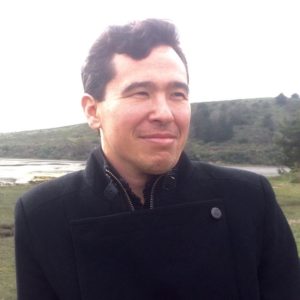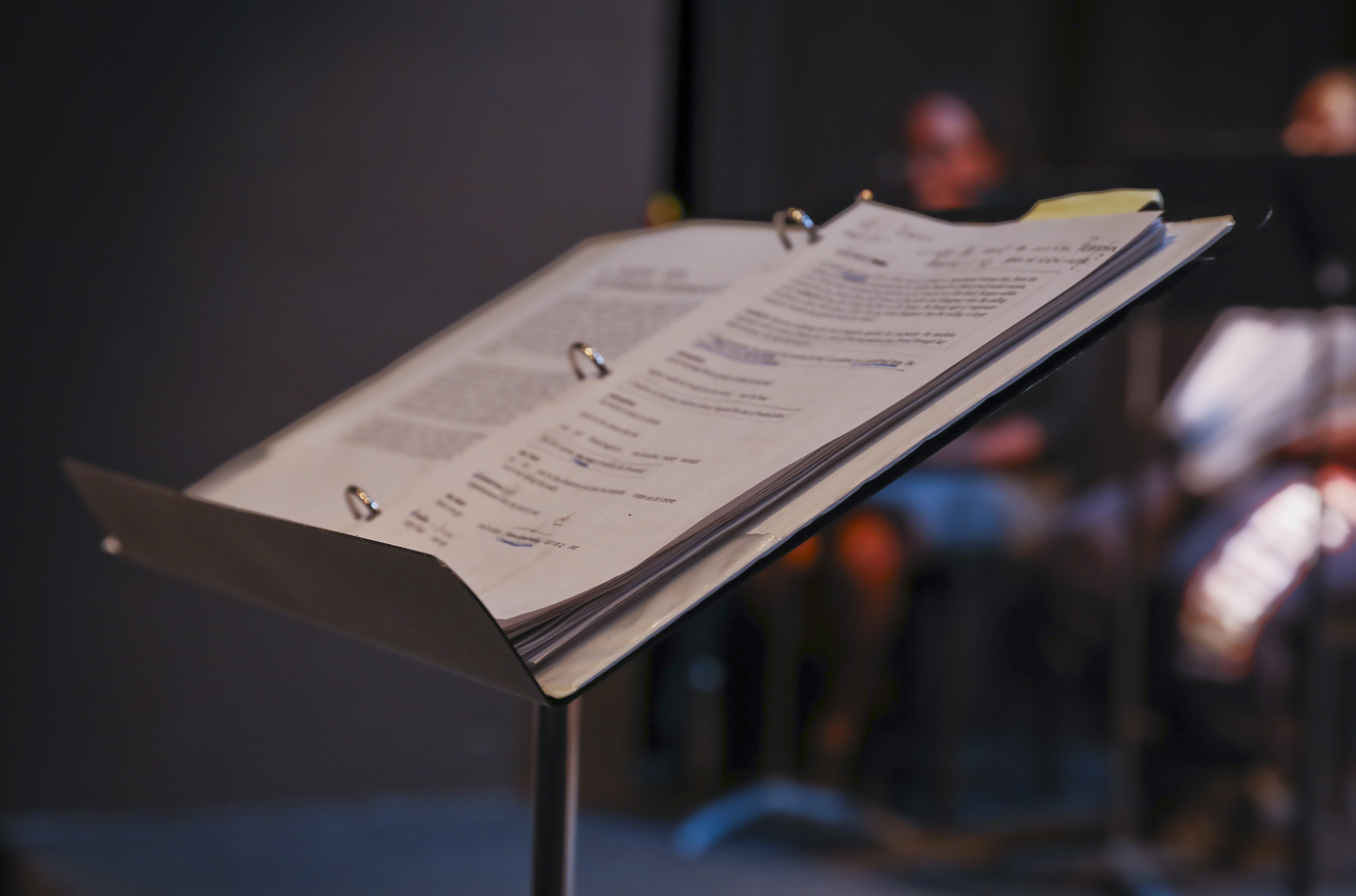08 Oct PNG: Paradise of Mixed Delights
By Andrew Saito, PF Resident Playwright abroad in Papua New Guinea
 I write these words through the haze of an anonymous tropical disease. My appetite is reduced, and fatigue sets in early and often. The upside is that my frequent lack of hunger is shaving off the double chin I acquired a couple of months ago in East New Britain and Bougainville, two large islands off the eastern coast of Papua New Guinea’s mainland, where my diet often consisted of generous portions of rice, crackers, and little else. PNG, as locals call it, is a far cry from the Bay Area. I cannot count the number of times while on bumpy, unpaved roads through remote jungle highlands that I’ve pined for a cone of salted caramel from BiRite Creamery, dim sum from the Inner Richmond, or even just a cheese slice from Arinell’s on Valencia Street. The good news is San Francisco will still be around, and certainly with new culinary, and theatrical, treasures to savor when I get back next March. Until then, I’ll content myself with endless portions of sweet potato and greens, canned tuna and carrots. I can’t bring myself to sample the Ox & Palm tinned corned beef ever again. Although, if I find myself in the middle of the jungle, with no options other than the good ole’ O & P, I suppose I’ll give in. After all, that greasy, grey slop is considered a luxury among Papua New Guineans. When in Rome, they say…
I write these words through the haze of an anonymous tropical disease. My appetite is reduced, and fatigue sets in early and often. The upside is that my frequent lack of hunger is shaving off the double chin I acquired a couple of months ago in East New Britain and Bougainville, two large islands off the eastern coast of Papua New Guinea’s mainland, where my diet often consisted of generous portions of rice, crackers, and little else. PNG, as locals call it, is a far cry from the Bay Area. I cannot count the number of times while on bumpy, unpaved roads through remote jungle highlands that I’ve pined for a cone of salted caramel from BiRite Creamery, dim sum from the Inner Richmond, or even just a cheese slice from Arinell’s on Valencia Street. The good news is San Francisco will still be around, and certainly with new culinary, and theatrical, treasures to savor when I get back next March. Until then, I’ll content myself with endless portions of sweet potato and greens, canned tuna and carrots. I can’t bring myself to sample the Ox & Palm tinned corned beef ever again. Although, if I find myself in the middle of the jungle, with no options other than the good ole’ O & P, I suppose I’ll give in. After all, that greasy, grey slop is considered a luxury among Papua New Guineans. When in Rome, they say…
I have been in Papua New Guinea since mid-April, having left the beautiful Bay Area to accept a Fulbright Fellowship in Creative Writing. My project is the writing of a script about Japanese soldiers who were in hiding or lost when the Japanese Army surrendered and left PNG in 1945. I’ve located references to about eight such men in PNG, although the most famous cases were in Guam and the Philippines, where the penultimate “straggler” to come out, Lt. Hiroo Onoda, stayed in hiding until 1974. It is vital to recognize that these soldiers did not know that World War II was over, or that Japan had surrendered. They hid and lived the barest of existences in deep jungles for up to 30 years, thinking they were still fighting to defend the honor of Japanese Emperor Hirohito.
PNG was a huge battleground during World War II, with Japan facing off against Australia and the U.S. While the Japanese outnumbered the Allies in terms of men, they also suffered far more fatalities. Notably, the number of men killed in battle or later from wounds was dwarfed by those who fell to starvation, malaria, and other illnesses.
My research thus far has taken me through ten of the country’s 21 provinces. I have received the boon to interview eight elders, both women and men, who were alive during the War and remember the Japanese military occupation. Several of these individuals can still sing Japanese songs, and recall some words – more than this fourth-generation Japanese American can speak – as well as the names of some soldiers they befriended at that time. While they all referred to the War as a scary time, and were glad when it was over, none of them viewed the Japanese as bad as a group. In fact, one man I interviewed praised the Japanese military for bringing discipline and work ethic to East New Britain. Given how slow, inefficient, and dysfunctional things often are in the Highlands, perhaps the government of Goroka, where I’m based, should invite the Japanese back. Of course, I say this entirely in jest. Or almost entirely.
Papua New Guinea is a country of startling biological, cultural, and linguistic diversity. Over 800 distinct languages – not dialects – are spoken by the approximately 7 million human inhabitants. It is home to many endemic species, including dozens of varieties of the rare, elusive and gorgeous birds of paradise. The diving and snorkeling off the endless shores is reported to be perhaps the very best in the world.
But PNG is also a difficult country to live in. Transportation takes a very long time, is often delayed, and is very expensive. Everything here is expensive, noticeably more so than the U.S., even though 85% of the population lives in villages and farms for a living. Most products are imported from abroad. And security and safety are definitely issues. I tend to not venture out at night. I received two security briefings at the U.S. Embassy on my first day in country. And the State Department chose to end the Peace Corps mission her in the 1990s. It still hasn’t been reestablished. Notably, I’m the first Fulbright scholar in PNG since the mid-90s. My predecessor is back, now teaching at the University of Goroka (UOG), my institutional sponsor.
I’ve managed to see two plays here. One would fall into the category of folk theatre, which uses indigenous traditions, including costumes and music, to present a contemporary story. This one was about AIDS, and honestly I had trouble following the plot. AIDS is epidemic in PNG, and my impression is that there’s little understanding among the population as to proper prevention. AIDS is often attributed to Sanguma, indigenous sorcery or witchcraft, which essentially all Papua New Guineans believe in. Missionaries, which have indelibly changed local cultures in less than one hundred years, are determined to stamp out Sanguma. They have their work cut out for them, as it is definitely on the rise.
Another play I saw was written and directed by my close friend, a local woman who teaches dance and drama at UOG. The play was about a young woman’s rebellion against her mother, which leads to her finding her parentage. The play was a musical, with a full band. Traditional and contemporary Western instruments were combined, and the music had definite jazz and pop influence. Tragically, after many weeks of rehearsal, there were fatally long black outs between each scene. There is not a very strong theatre tradition in PNG, and apparently stage management doesn’t exist at all. Also, I’ve been told that actors and musicians often consider rehearsal to be optional.
I’ve seen a bit of theatre in villages. These plays are often comic, with a few actors in the middle of a circle of audience members, all standing. There’s lots of laughter, sometimes drag, and either the plays are very short, or interminably long. Aesthetics are vastly different here.
What is amazing are the singsings, where groups of dancers from different tribes perform. Usually, the dancers also sing and play kundu drums. The costumes run the gamut, from a group of men entirely painted black and carrying a faux snake twenty meters long on their heads, to men and women wearing loincloths, all variety of leaves on their arms, cascas (like an opossum) hides on their backs, gigantic headdresses featuring bird of paradise plumes, and six or so bright gold or silver kina shells hanging from their necks. The variety of bilas, as singsing bling is termed, is amazing. One would have to devote years to cultural festivals in all parts of the country in order to see the full variety of cultural expression that exists. And even then, there would still be more. In this country, there always is.
Right now, I have an essentially complete outline for my script, which grows daily. Of late, I’ve been reading on Japanese stragglers, and am currently halfway through Onoda’s memoir. While he was located on Lubang Island in the Philippines, his experience bears directly on my project. There exists a memoir by one of the stragglers who lived in PNG for ten years after the war, but it exists only in Japanese which, thanks in part to the internment of my grandparents during WWII, I do not speak.
Within the next week or two, I will travel to the Sepik, in the northwest of PNG, where I plan to spend at least a month interviewing elders about the war, learning about local cultures, and making friends, which is very easy to do here.
I’ll be seeing you back in the Bay soon enough. Until then, enjoy a burrito on Mission Street for me. I’ll be savoring instant noodles and tasteless balls of fried dough. Oh, the joy.
——-
Note: The opinions expressed herein are my own, and do not represent the Fulbright Program, the Institute of International Education, or the U.S. Department of State.




No Comments